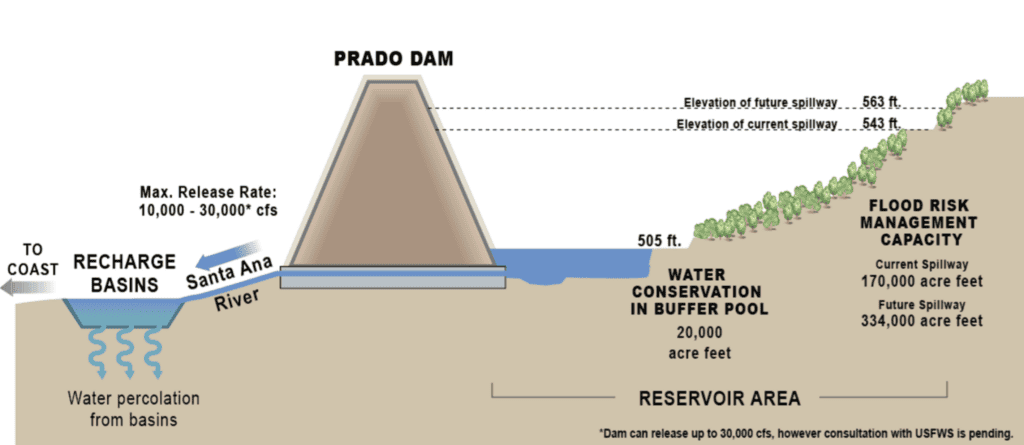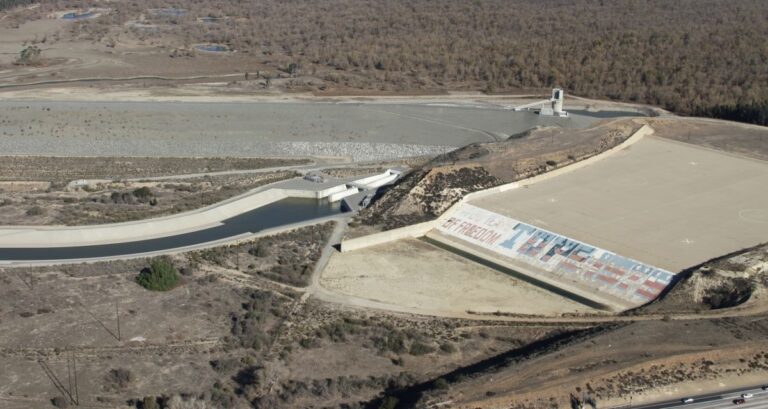Press release from the Orange County Water District, Army Corps of Engineers, and Scripps Institute of Oceanography
A new report illustrates the benefits of the Forecast-Informed Reservoir Operations (FIRO) at Prado Dam. This innovative strategy, developed collaboratively by the U.S. Army Corps of Engineers (USACE), the Orange County Water District (OCWD), and the Center for Western Weather and Water Extremes (CW3E) at Scripps Institution of Oceanography at UC San Diego, is poised to revolutionize water resource management.
The report, titled the Prado Dam FIRO Final Viability Assessment, describes how forecasting tools can allow operators to increase the volume of storm water that is temporarily retained behind the dam and released later at a rate that allows recharge into the Orange County groundwater basin to enhance water supply. FIRO enables the optimization of stormwater capture at Prado Dam through advanced forecasting of atmospheric rivers (ARs). These forecasts are crucial in managing both beneficial precipitation and flood risks in California.
The study quantifies FIRO effectiveness, revealing an average annual increase of 4,000-6,000 acre-feet of groundwater recharge, which is enough water for 32,000 to 48,000 people per year. In a wet year, FIRO could provide up to 23,000 acre-feet of additional recharge, which is enough water for over 180,000 people. Implementing FIRO at Prado Dam would result in a significant boost in water supply, valued at millions of dollars, and a slight positive impact on flood risk management.
OCWD President Cathy Green highlights the local benefits, stating, “It has been tremendously rewarding to partner with Scripps, USACE and other key stakeholders on this project, which will increase water supply reliability for the region. Local capture decreases the reliance on imported water, which is increasingly more expensive and less reliable.”

“FIRO pilot sites like Prado Dam add valuable experience to our agency’s understanding about how to implement FIRO in various kinds of watersheds and reservoirs, enabling us to find better balances between multiple authorized purposes such as flood-risk management, water supply and ecological benefits at our reservoirs. FIRO is also a powerful tool in adding flexibility to water management practice that improves the resiliency of existing infrastructure to better face the challenges presented by a changing climate” said Cary A. Talbot, with the U.S. Army Engineer Research and Development Center and FIRO program national lead for the Corps.
The first FIRO pilot study was at Lake Mendocino on the Russian River. Implementation of FIRO at Lake Mendocino was shown to increase water supply by nearly 20 percent. At Prado Dam, FIRO is expected to increase average storm water recharge by […]
Full article: mavensnotebook.com

